Dry and damaged hair is a common concern that can arise from various factors, including environmental stressors, chemical treatments, and improper styling practices. It can manifest as split ends, breakage, and a lack of shine, compromising the overall health and appearance of your hair.
This comprehensive guide delves into the causes, signs, and impacts of dry and damaged hair, offering practical solutions and effective hair care techniques to restore its vitality and beauty.
Through gentle hair care techniques, nourishing hair treatments, protective styling methods, and healthy hair habits, you can transform your dry and damaged hair into healthy, resilient locks. Discover the benefits of deep conditioning treatments, DIY hair masks, and leave-in conditioners, along with tips for avoiding tight hairstyles and excessive heat styling.
Learn how a balanced diet, adequate hydration, and stress management contribute to healthy hair growth and prevent dryness and damage.
Understanding Dry and Damaged Hair

Healthy hair is a reflection of overall health and well-being. Dry and damaged hair is a common problem that can be caused by various factors, affecting its appearance and overall health. Understanding the causes, signs, and impact of dry and damaged hair is essential for developing effective care strategies.
Causes of Dry and Damaged Hair
- Environmental Factors: Sun exposure, wind, and dry air can strip hair of its natural oils, leading to dryness and damage.
- Chemical Treatments: Frequent use of harsh shampoos, dyes, and styling products can deplete the hair’s natural oils, causing dryness and breakage.
- Styling Practices: Excessive heat styling with blow dryers, straighteners, and curling irons can damage the hair’s protein structure, resulting in dryness and breakage.
Signs and Symptoms of Dry and Damaged Hair
- Split Ends: Split ends are a common sign of dry and damaged hair, where the hair shaft splits into two or more strands.
- Breakage: Dry and damaged hair is more prone to breakage, leading to shorter hair strands and a ragged appearance.
- Lack of Shine: Healthy hair naturally reflects light, giving it a shiny appearance. Dry and damaged hair lacks shine due to the loss of natural oils.
- Tangling: Dry and damaged hair is more prone to tangling, making it difficult to comb or style.
- Static: Dry hair is more prone to static electricity, causing it to stand up and appear frizzy.
Impact of Dry and Damaged Hair on Overall Hair Health and Appearance
Dry and damaged hair can have a significant impact on overall hair health and appearance. It can lead to:
- Reduced Hair Growth: Dry and damaged hair is more prone to breakage, which can slow down hair growth.
- Dull and Lifeless Appearance: Dry and damaged hair lacks shine and vitality, making it appear dull and lifeless.
- Increased Risk of Split Ends and Breakage: Dry and damaged hair is more prone to split ends and breakage, leading to further damage.
- Difficulty Styling: Dry and damaged hair is more difficult to style and manage, making it challenging to achieve desired hairstyles.
Gentle Hair Care Techniques

Dry and damaged hair requires a gentle approach to care for and restore its health. Implementing these techniques can help minimize further damage and promote healthier hair.
Washing Dry and Damaged Hair
The frequency of washing depends on your hair type and lifestyle. Generally, it’s recommended to wash dry and damaged hair 2-3 times a week. Avoid washing too frequently, as it can strip away natural oils, leading to further dryness.
Use lukewarm water to wash your hair. Hot water can open up the hair cuticles, causing frizz and dryness. Additionally, choose shampoos and conditioners designed for dry and damaged hair. These products typically contain moisturizing and repairing ingredients that help restore hair’s health.
Detangling Dry and Damaged Hair
Detangling dry and damaged hair requires patience and care. Use a wide-toothed comb or detangling brush to gently remove knots and tangles. Start at the ends of your hair and work your way up to the roots. Avoid pulling or tugging at your hair, as this can cause breakage.
Consider using detangling products, such as leave-in conditioners or detangling sprays. These products help lubricate the hair strands, making them easier to detangle without causing breakage.
Drying Dry and Damaged Hair
When drying dry and damaged hair, it’s essential to use low heat settings to minimize heat damage. Avoid using high heat, as it can further dry out and damage the hair.
Use a microfiber towel to gently pat your hair dry. Microfiber towels are gentler on the hair compared to regular towels, as they absorb moisture without causing friction. Alternatively, air-drying your hair is the most gentle method, allowing your hair to dry naturally without heat.
Nourishing Hair Treatments
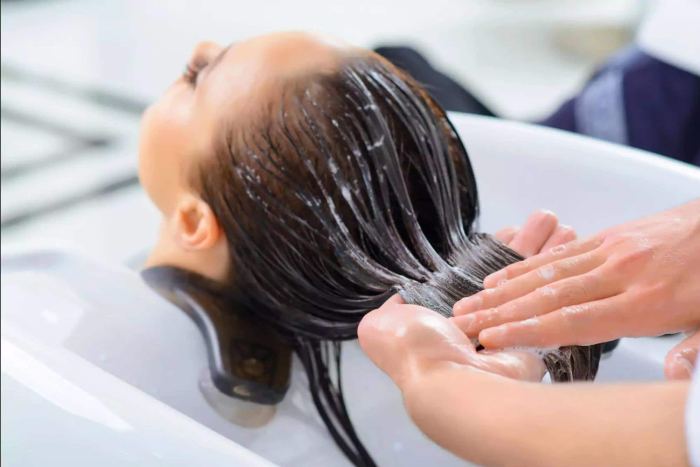
Dry and damaged hair craves deep conditioning treatments that replenish moisture and restore its health. These treatments penetrate the hair shaft, providing intense hydration and nourishment to revitalize and repair damaged strands.
Deep Conditioning Treatments
Deep conditioning treatments are essential for dry and damaged hair, providing intense hydration and nourishment to restore its health. Look for products containing natural ingredients like coconut oil, avocado, and honey, which are known for their moisturizing and restorative properties.
Apply the treatment to clean, damp hair, focusing on the ends, and leave it on for the recommended time, typically 30 minutes to an hour. Rinse thoroughly and style as usual.
DIY Hair Masks and Treatments
Nourishing hair masks and treatments can be easily made at home using natural ingredients. Here are a few popular recipes:
- Coconut Oil Hair Mask: Mix equal parts coconut oil and honey. Apply the mixture to damp hair, focusing on the ends, and leave it on for 30 minutes to an hour. Rinse thoroughly and style as usual.
- Avocado Hair Mask: Mash an avocado and mix it with one tablespoon of olive oil and one tablespoon of honey. Apply the mixture to damp hair, focusing on the ends, and leave it on for 30 minutes to an hour. Rinse thoroughly and style as usual.
- Honey Hair Mask: Mix one part honey with two parts water. Apply the mixture to damp hair, focusing on the ends, and leave it on for 30 minutes to an hour. Rinse thoroughly and style as usual.
Leave-In Conditioners and Hair Oils
Leave-in conditioners and hair oils provide continuous hydration and nourishment to dry and damaged hair. Apply a small amount of leave-in conditioner to damp hair, focusing on the ends, and style as usual. Hair oils can be applied to dry or damp hair, focusing on the ends.
Avoid applying too much oil, as it can weigh hair down. These products help to keep hair moisturized and protected from further damage.
Protective Hair Styling
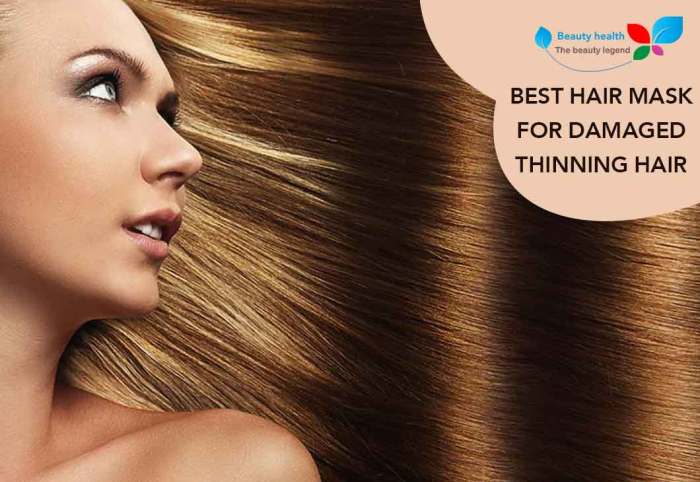
Nurturing dry and damaged hair requires adopting protective styling practices to minimize breakage and promote overall hair health. Avoiding tight hairstyles and excessive heat styling is crucial to prevent further damage and allow the hair to recover.
Creating protective hairstyles like braids, buns, and loose updos can help reduce stress on the hair, preventing breakage and tangles. These styles keep the hair secured and protected, minimizing friction and exposure to external factors that can cause damage.
Protective Hairstyles
- Braids: Braids are an effective way to protect the hair from breakage and tangles. They keep the hair in place, preventing friction and reducing the risk of split ends. Different braiding techniques can be used to create various styles, allowing for versatility and creativity.
- Buns: Buns are another protective hairstyle that helps keep the hair away from the face and minimizes friction. Buns can be created high on the head or low at the nape of the neck, depending on personal preference. They are suitable for various hair lengths and can be styled with accessories for added flair.
- Loose Updos: Loose updos are a great option for those who want to keep their hair up while maintaining a relaxed and effortless look. Updos can be created using a variety of techniques, such as twists, knots, and pins, and can be adorned with hair accessories for a touch of elegance.
Heat Protectant Sprays and Serums
When using hot tools for styling, it is essential to apply heat protectant sprays or serums to the hair before styling. These products create a protective barrier on the hair, reducing the impact of heat damage and preventing breakage. Heat protectants can be found in various forms, such as sprays, creams, and serums, and should be applied to damp or dry hair before using hot tools.
Healthy Hair Habits
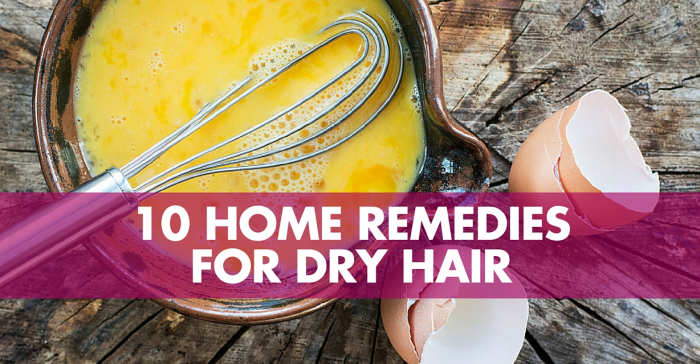
Maintaining healthy hair requires a holistic approach that encompasses diet, hydration, regular trims, stress management, and lifestyle choices. Nurturing healthy hair from within and practicing gentle hair care techniques can significantly improve hair health and prevent dryness and damage.
Balanced Diet and Adequate Hydration
A balanced diet rich in essential nutrients is crucial for healthy hair growth and overall hair health. Nutrients like protein, iron, zinc, biotin, and omega-3 fatty acids play vital roles in promoting healthy hair growth and preventing dryness and damage.
Adequate hydration is also essential, as water helps transport nutrients to the hair follicles and maintains the hair’s natural moisture balance.
Regular Trims
Regular trims are essential for removing split ends, which can cause hair to become dry, brittle, and prone to breakage. Split ends can also hinder healthy hair growth by preventing nutrients from reaching the hair shaft. Trimming the hair regularly helps to maintain healthy hair growth and prevent further damage.
Managing Stress
Stress can negatively impact hair health, leading to hair loss, dryness, and damage. Chronic stress can disrupt the hair growth cycle and cause hair to become more fragile and prone to breakage. Practicing relaxation techniques, such as meditation, yoga, or deep breathing exercises, can help manage stress and reduce its impact on hair health.
Additionally, maintaining a healthy lifestyle, including regular exercise and adequate sleep, can also contribute to reducing stress levels and promoting overall hair health.
Hair Care Products for Dry and Damaged Hair
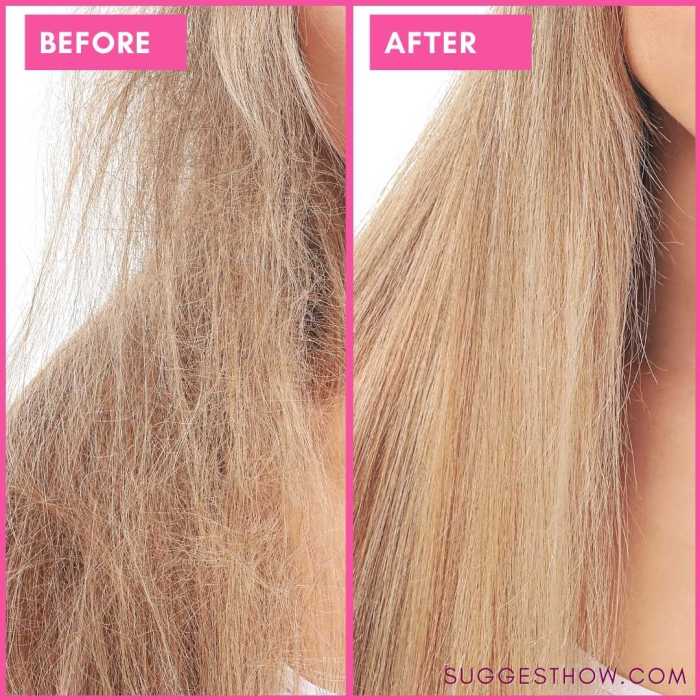
Nurturing dry and damaged hair requires specific care products designed to restore its health and vitality. Selecting the right products can make a significant difference in improving the condition of your hair.
When choosing hair care products for dry and damaged hair, it’s essential to consider their ingredients and formulation. Avoid products containing harsh chemicals, sulfates, or alcohol, as these can further strip the hair of its natural oils and moisture.
Types of Shampoos, Conditioners, and Hair Treatments
There are various types of shampoos, conditioners, and hair treatments specifically formulated for dry and damaged hair. These products often contain moisturizing and nourishing ingredients to help repair and protect the hair.
| Product Type | Benefits | Key Ingredients |
|---|---|---|
| Moisturizing Shampoo | – Gently cleanses without stripping natural oils | – Aloe vera, shea butter, coconut oil |
| Hydrating Conditioner | – Provides deep conditioning and hydration | – Keratin, argan oil, panthenol |
| Leave-in Conditioner | – Adds moisture and detangles hair | – Jojoba oil, glycerin, amino acids |
| Hair Mask or Treatment | – Intense nourishment and repair | – Avocado oil, honey, protein |
| Split End Repair Serum | – Seals and smooths split ends | – Argan oil, silicones, vitamin E |
Recommended Hair Care Products
Here are some recommended hair care products for dry and damaged hair, along with their key ingredients and benefits:
- Shampoo: [Product Name]
- Key Ingredients: Keratin, coconut oil, aloe vera
- Benefits: Gently cleanses, hydrates, and repairs hair.
- Conditioner: [Product Name]
- Key Ingredients: Argan oil, shea butter, panthenol
- Benefits: Provides deep conditioning, detangles, and adds shine.
- Hair Mask: [Product Name]
- Key Ingredients: Avocado oil, honey, protein
- Benefits: Restores moisture, repairs damage, and strengthens hair.
- Leave-in Conditioner: [Product Name]
- Key Ingredients: Jojoba oil, glycerin, amino acids
- Benefits: Adds moisture, detangles, and protects hair from heat styling.
- Split End Repair Serum: [Product Name]
- Key Ingredients: Argan oil, silicones, vitamin E
- Benefits: Seals split ends, smooths hair, and prevents further breakage.
Conclusion
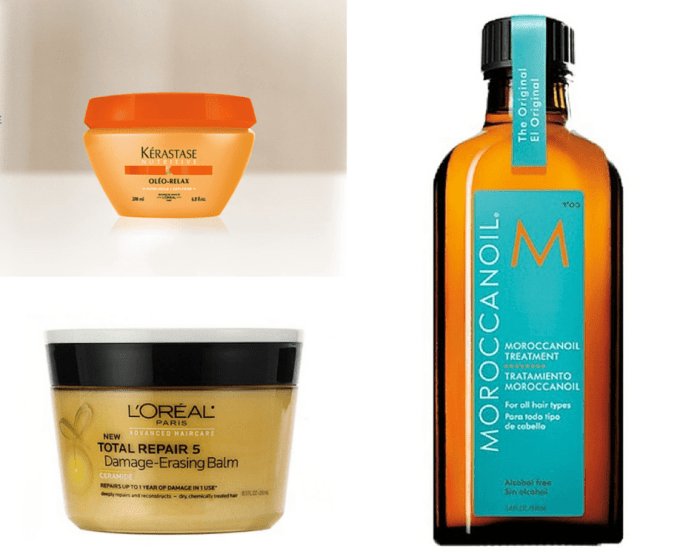
With the right care and attention, you can restore your dry and damaged hair to its former glory. By following the comprehensive strategies Artikeld in this guide, you can achieve healthy, strong, and radiant hair that reflects your inner vitality.
Embrace the journey of hair restoration and enjoy the confidence that comes with beautiful, healthy locks.
Q&A
Q: How often should I wash my dry and damaged hair?
A: Washing your hair too frequently can strip it of its natural oils, exacerbating dryness. Aim to wash your hair 2-3 times per week, using lukewarm water and a gentle shampoo designed for dry and damaged hair.
Q: How can I detangle my dry and damaged hair without causing breakage?
A: Start by gently detangling your hair with your fingers. Then, use a wide-toothed comb or detangling brush, working from the ends of your hair upwards. Apply a detangling product or leave-in conditioner to help loosen knots and prevent breakage.
Q: What are some natural ingredients that I can use to nourish my dry and damaged hair?
A: Coconut oil, avocado, and honey are excellent natural ingredients for nourishing dry and damaged hair. You can create DIY hair masks using these ingredients and apply them to your hair for deep conditioning treatments.
Q: How can I protect my dry and damaged hair from heat styling damage?
A: Always use a heat protectant spray or serum before styling your hair with hot tools. Additionally, avoid using high heat settings and opt for lower temperatures whenever possible.
Q: What are some healthy hair habits that I can adopt to prevent dryness and damage?
A: Maintain a balanced diet rich in vitamins and minerals essential for hair health. Stay hydrated by drinking plenty of water. Manage stress levels through relaxation techniques and lifestyle changes, as stress can negatively impact hair health.



